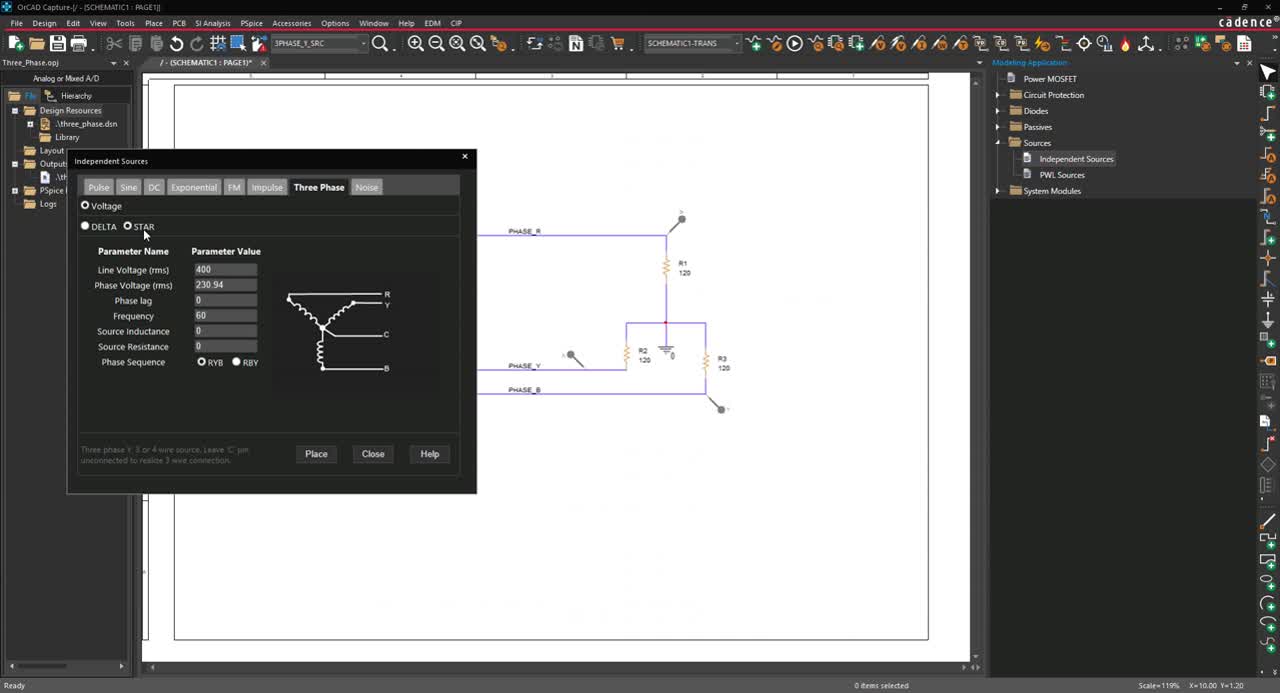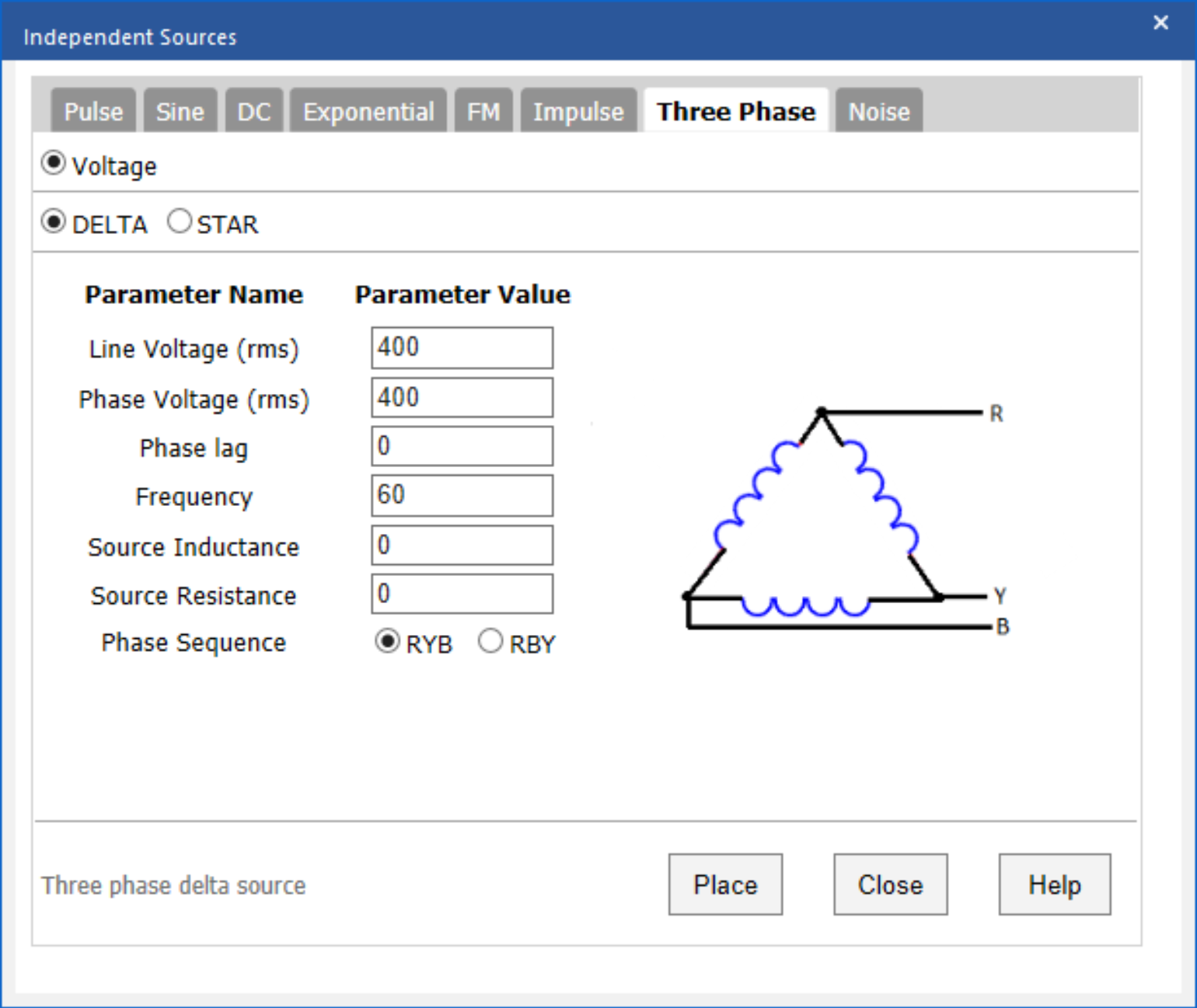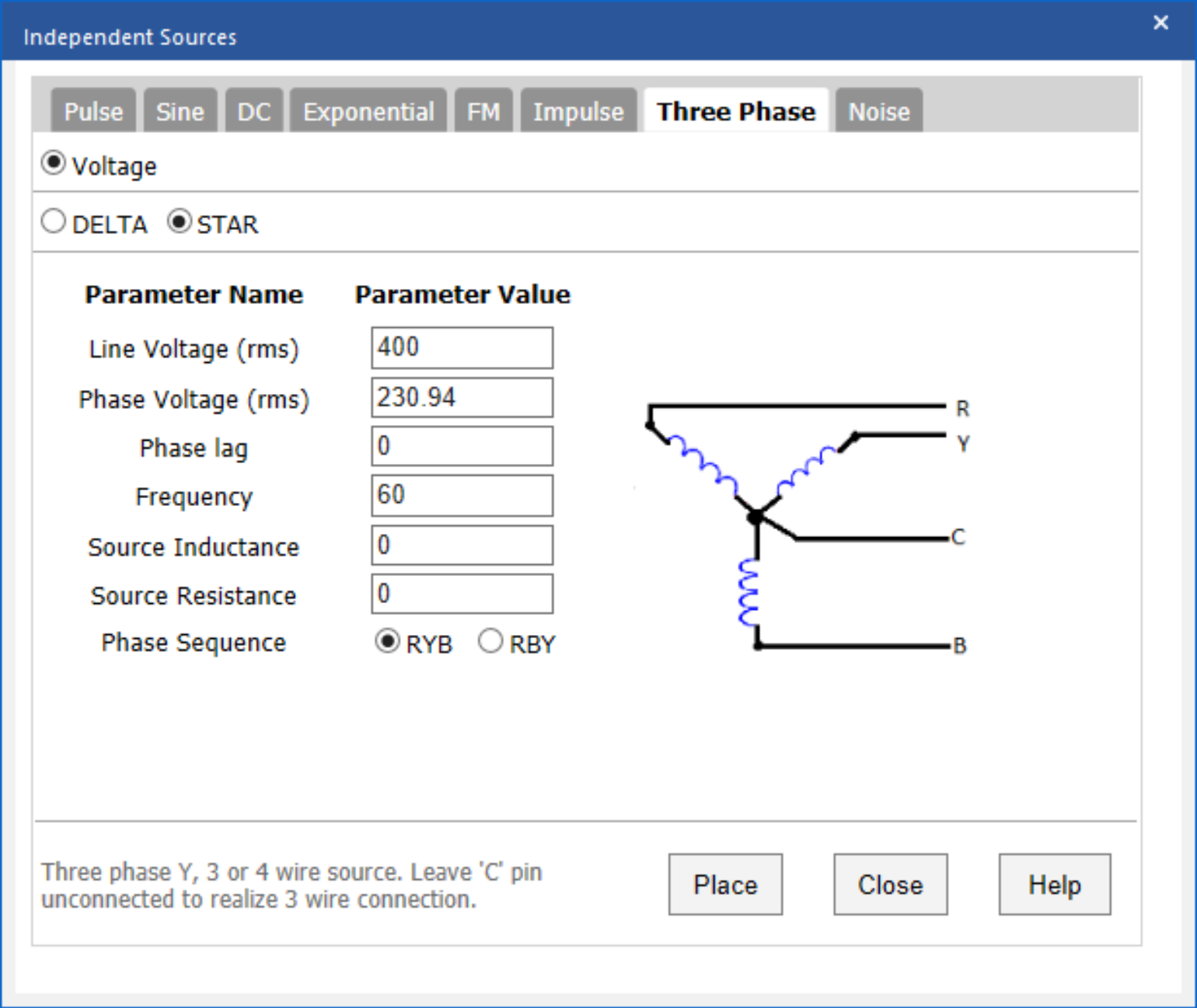
Modeling designs helps engineers verify whether their circuit will function as intended. Modeling programs simulate circuit behavior under different conditions and in accordance with design requirements, allowing engineers to better plan and build circuits.
Every SPICE simulation needs to have a source or input signal. To analyze how the circuit will behave in real life, this input must be modeled accurately. If not modeled accurately, functionality issues can go undetected until far later in the design process, wasting time and money. To efficiently and accurately create a three phase source SPICE model, the intended input signal must be interpreted by identifying the type and signal values for replication.
What is a Three-Phase Source?
A three-phase source consists of three, single-phase sources with equal magnitude and a 120° phase shift between each source. A three-phase source is connected in a Y (Delta configuration) or can incorporate a fourth conductor/neutral connection (Star configuration) that can be grounded or made accessible.
What is Needed to Model a Three-Phase Source?
To create a balanced three-phase source for simulation, there are two items that must be defined:
- Configuration
- Which type of configuration is required for the source: Delta or Star?
- Data Points
- What are the critical signal values needed to create the desired waveform?
This information must be incorporated into the SPICE simulation model which can be achieved by manually creating or editing a text file. Keep in mind if the source signal created is not the intended outcome, values will need to be edited manually. This manual process to produce the desired source signal is time consuming and increases the likelihood of errors; however, the PSpice Modeling App provides a fast, easily-configurable, and fully-integrated method to create three-phase sources for simulation.
Creating a Three Phase Source SPICE Model with PSpice
The three-phase source modeling application quickly creates various three-phase source models with a wizard-based approach. The necessary source specifications are pre-defined and users can easily input desired parameters required for all three-phase sources such as:

- Configuration: Easily select from Delta or Star.
- Line Voltage: Define the voltage or potential difference between two lines of different phases (RY, RB, and YB).
- Phase Voltage: Specify the voltage or potential difference between a line and a common neutral point. The relationship between phase voltage and line voltage depends upon the type of configuration used:
- Star Connection:
- Phase Voltage = Line Voltage / √3
- Delta Connection:
- Phase Voltage = Line Voltage
- Star Connection:

- Phase Lag: Define the lag or lead of phase R when the time is zero. If a phase lag is required the value should be negative.
- Frequency: Define the frequency of operation in Hz.
- Source Inductance: For a non-ideal source, an inductance can be inserted in series with each phase offering source impedance. To create an ideal source, set this optional parameter to 0.
- Source Resistance: For a non-ideal source, a resistance can be inserted in series with each phase. To create an ideal source, set this optional parameter to 0.
- Phase Sequence: Define the order in which the phase voltages reach their maximum magnitude. If the Phase sequence is set to RYB, then Phase voltage at R will reach its maximum value first, followed by Y, and then B.
Using the inputted information above, the PSpice Modeling App generates a schematic symbol and automatically associates the newly created three-phase source SPICE model without leaving the OrCAD Capture environment. The PSpice Modeling App also automatically manages the simulation profile configuration, eliminating any library set up for simulation.
To try this yourself, be sure to download the Free Trial of OrCAD and get step-by-step instructions to create a three-phase source SPICE Model at EMA Academy.











